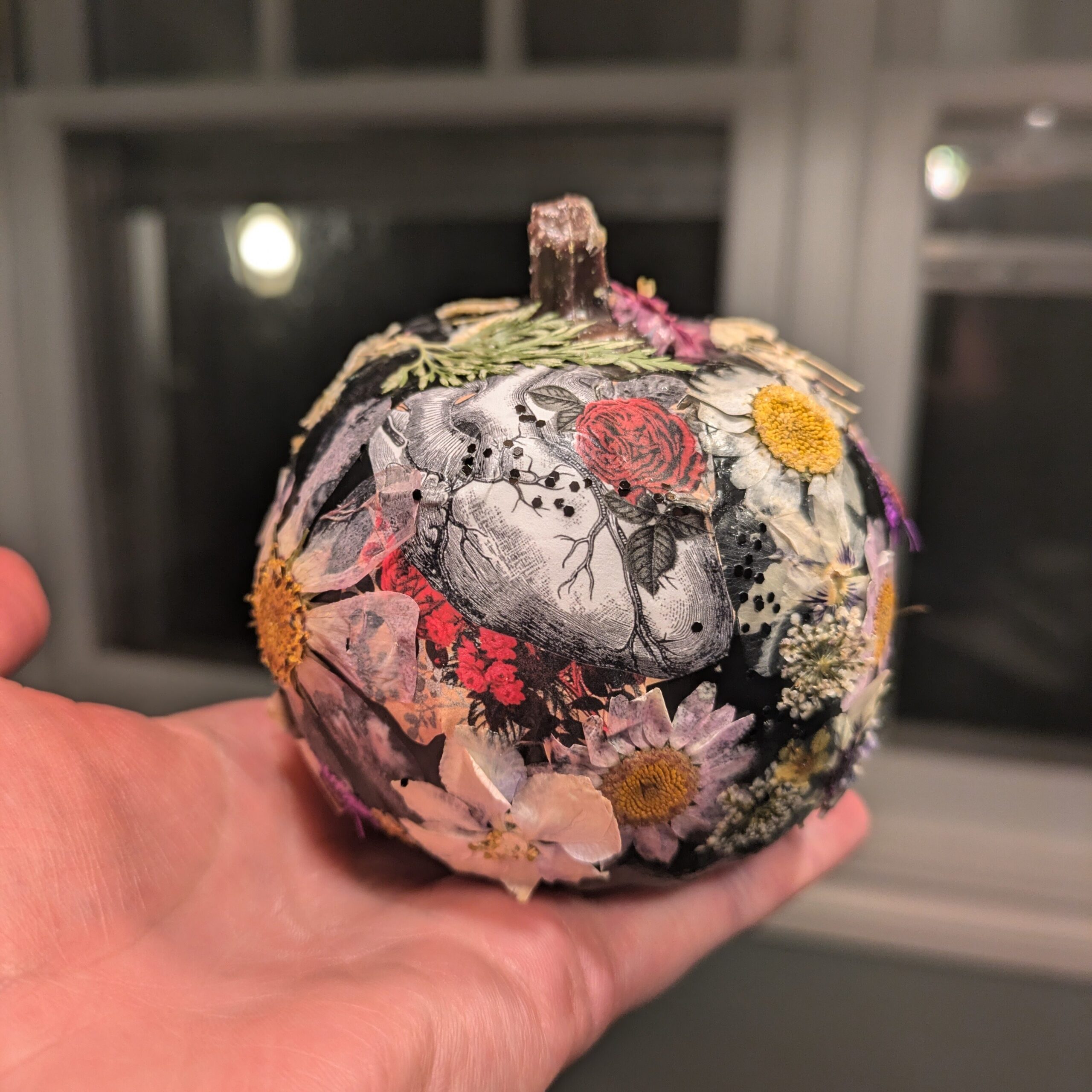Let’s be real: we all secretly miss the days of finger-painting masterpieces and wielding a crayon like a sword. Little did we know, we were doing some serious brain training! It turns out that getting your hands messy with clay or creating a watercolor wonderland isn’t just for kids; it’s like a superfood smoothie for your mind. Here’s how art and mental health are connected (and no, you don’t need to be the next Picasso). Last night I had the opportunity to do some arts and crafts with my girls. We modge-podged (is that a word?) some pumpkins. I don’t consider myself particularly crafty, but I really got focused and enjoyed the process.

Let’s dive into how art and mental health are connected.
1. It’s Like CrossFit for Your Brain
If your brain could hit the gym, it would choose art class. Creating art activates a range of brain areas, from the somatosensory regions (which process sensory information) to motor areas (controlling movement) and visual centers (handling what you see)【source】【source】. Think of it as a mental full-body workout! You’re working different parts of your brain simultaneously, like when you’re trying to paint within the lines while secretly daydreaming about lunch.
Just as squats work your quads, abs, and maybe a bit of your ego, creating art stretches your brain’s capacity to juggle multiple functions. Researchers even suggest that crafting and observing art engage different cognitive systems, which improves mental flexibility and creativity【source】. So, every time you break out the paintbrush, you’re not just making pretty pictures—you’re helping your brain bench press its way to brilliance.
2. Art and Mental Health for Stress
Art is basically the yoga mat for your mind. Sure, meditation and deep breathing work wonders, but let’s face it—sitting in silence isn’t everyone’s cup of tea. Art, on the other hand, offers a more exciting alternative. Studies show that artistic activities significantly reduce levels of cortisol, the infamous stress hormone. Whether you’re painting, drawing, or just doodling during a meeting (we’ve all done it), you’re giving your brain a much-needed break【source】.
In fact, researchers at medical universities like Stanford have found that simply looking at art can activate brain systems that reduce stress and boost happiness【source】. So, the next time you’re overwhelmed, instead of reaching for that third cup of coffee, try reaching for a paintbrush. Art and mental health go hand-in-hand.

3. Emotional Processing
Ever felt like you just can’t talk about what’s bothering you? Good news: you don’t have to. Art offers a sneaky way to work through emotions without saying a word. It’s like having a deep conversation with yourself, minus the awkward pauses. Art therapy has been proven to help people process emotions, trauma, and even grief in a healthier way【source】.
When you’re lost in creating something meaningful, you’re actively engaging brain networks related to emotional processing. This interaction between art and emotion explains why art therapy is so effective in treating anxiety, depression, and even PTSD【source】. And, let’s face it, drawing your feelings is way more satisfying than trying to describe them.
4. Boosts Brain Power and Creativity
Remember how your high school art teacher was always going on about “thinking outside the box”? Well, it turns out they were onto something. Engaging in creative activities strengthens the brain’s neural plasticity—that’s the brain’s ability to adapt, grow, and form new connections. It’s why learning new skills, like painting or sculpting, keeps your brain sharp and youthful【source】.
Art isn’t just about making something beautiful; it’s about problem-solving in new, inventive ways. When you face that blank canvas, your brain gets a workout coming up with how to fill the space. This creative boost isn’t just limited to art—research shows that it transfers over to other areas of life, making you better at tackling challenges, whether it’s navigating office politics or figuring out how to fix your Wi-Fi【source】.
5. Enter the “Flow” Zone
Ever get so absorbed in something that you lose track of time? That’s called “flow,” and it’s a state of mind that artists know all too well. When you’re in flow, you’re completely immersed, focused, and weirdly happy. It’s like your brain has slipped into a cozy, productive groove where everything feels effortless. This state has profound effects on mental health, offering a break from the constant chatter of daily life【source】.
Flow is often described as a state of happiness that can reduce anxiety and even increase self-esteem. So, not only are you creating something cool, but you’re also boosting your mental health in the process. Win-win!
Conclusion: Doodle Your Way to Brain Gains
At the end of the day, making art isn’t just child’s play. It’s a scientifically-backed way to boost your brain power, lower stress, and tap into a wellspring of creativity you might have forgotten since your last encounter with finger paints. Whether you’re picking up a paintbrush or just doodling in the margins, your brain will thank you for it.
Plus, the next time someone catches you sketching during a boring meeting, just tell them you’re working on your cognitive fitness. You might even convince them to join in.
For even more art in your life, join us in November for First Tuesday and the unveiling of our new mural, “Wild Roots, Gentle Souls” by Abby Crow.







